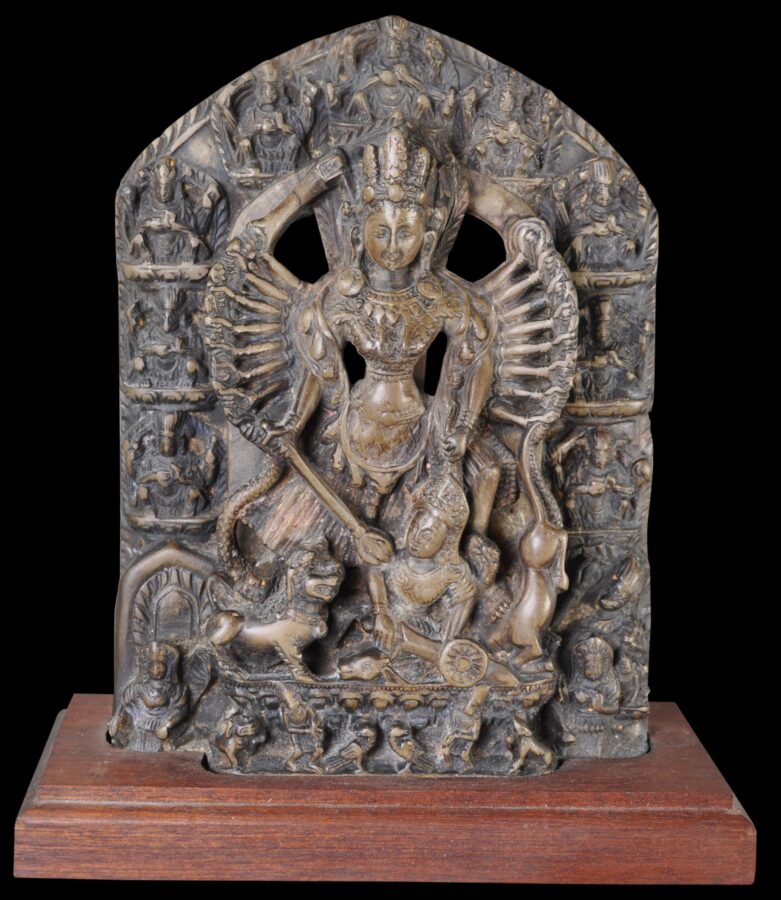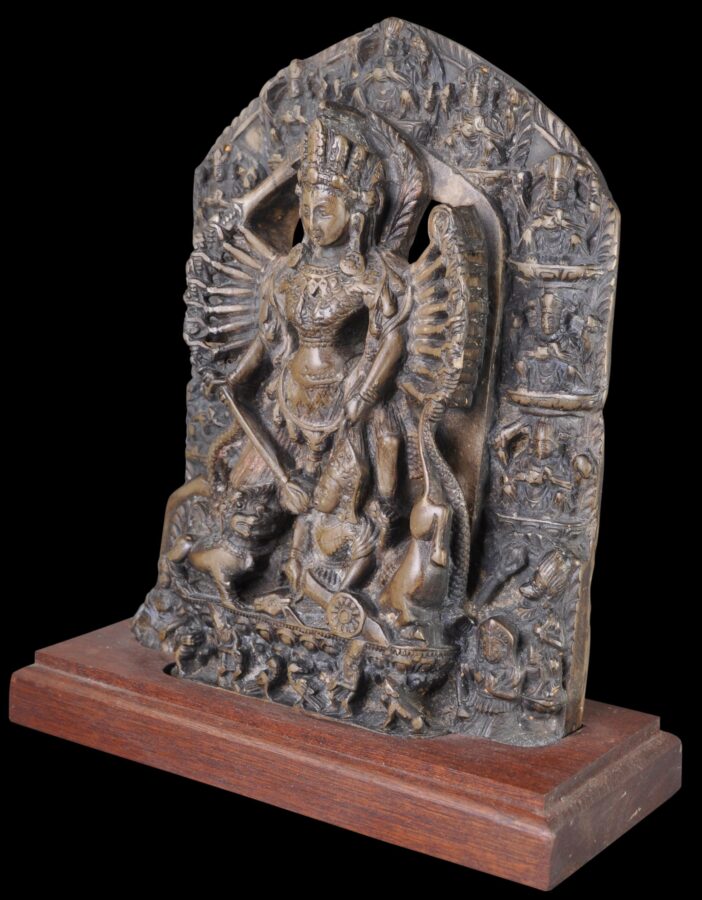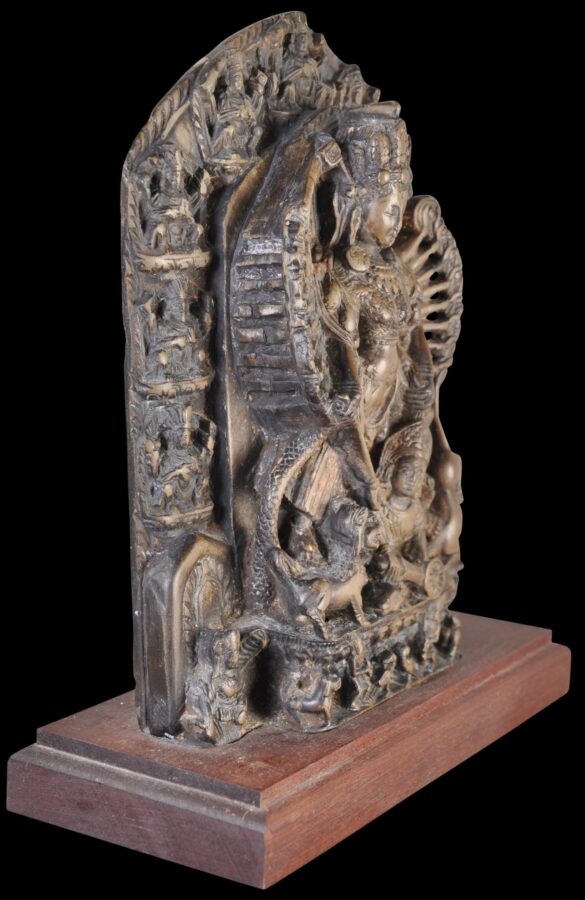Enquiry about object: 9739
Nepalese Mala-Period Green-Grey Stone Durga Mahishasura Mardini
Nepal 17th-18th century
height (including stand): 23cm, width of stand: 19.9cm, depth of stand: 8.9cm, weight: 1,717g
Provenance
Simon Digby Collection (1932-2010)
This finely carved and pierced green-grey stone image of Durga slaying the Buffalo Demon (Durga Mahishasura Mardini), from the Simon Digby Collection, dates to the Malla Period of 17th-18th century Nepal. It shows a central group of Durga, the buffalo, the demon Mahishasura, and Durga’s lion mount, all atop a lotus pedestal dais supported by tiny bird, deity and animal figures. Attendants are on either side and surrounding the group is aureole carved with nine niches containing deities holding attributes – an array that is very much a Malla-period confection.
This dynamic rendering of Durga shows the goddess with 18 arms, and a necklace of severed heads resting on her chest. The depiction of Durga with 18 arms is particularly Nepalese (see Pal, 1985, p. 134, 145 for two carved schist examples dating to the 18th century – both have 18 arms). Indian depictions generally include fewer arms. The dynamism of the image is enhanced by the carver having cut away part of the aureole allowing light to pass through.
The moment just after decapitation is captured in this image. Durga’s left foot is on Mahishasura, the buffalo demon’s back. One arm holds the buffalo by its tail. A sword is in one arm and another has pulled the demon by its hair from the severed neck of the buffalo. Durga holds attributes in her other hands. A thin snake writhes from around Durga dropping from both sides of the goddess.
The head of the buffalo rests beneath Mahishasura. Durga’s lion mount stands on her right, waiting to feed on the buffalo’s entrails.
Pal (1985, p. 134) says that such plaques were most frequently encountered in the three main cities of the Kathmandu Valley – Kathmandu, Patan and Bhaktapur. Not only were they worshipped in shrines but were installed ex-voto near water fountains or in courtyards and received offerings from passersby.
The image is mounted on a wooden stand. It is in fine condition.
References
Pal, P., Art of Nepal, Los Angeles County Museum of Art, 1985.





